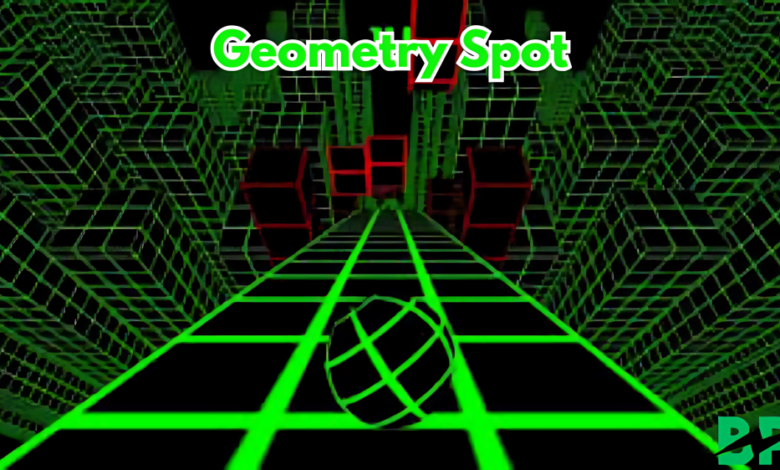Geometry Spot Unlocking The Beauty of Shapes And Patterns

Geometry is a fundamental branch of mathematics that plays a crucial role in various aspects of daily life, from art to engineering. If you’ve ever wondered how artists create symmetry in their paintings or how architects design buildings that can withstand the forces of nature, geometry provides the answers. This article dives deep into the concept of the geometry spot, exploring its significance and how it can be applied in multiple fields.
What Is a Geometry Spot?
A geometry spot is a term used to refer to a point or location where geometrical principles intersect or are applied. In simpler terms, it’s a physical or conceptual location where geometric shapes, patterns, or forms come together. These spots can be literal locations, like where two lines meet in space, or they can represent more abstract ideas, such as a central point in a design that serves as the focal point for symmetry and balance.
The Role of Geometry in Daily Life
Geometry surrounds us in both natural and man-made environments. From the symmetry in flowers and leaves to the intricate patterns of a honeycomb, geometry is a constant. Man-made structures, such as buildings, bridges, and roads, also rely heavily on geometric principles. Understanding the concept of a geometry spot helps explain why these structures are so stable and aesthetically pleasing.
How Architecture Uses Geometry Spots
Architecture, as an art form, relies on geometry to create spaces that are both functional and visually appealing. In architectural designs, geometry spots are used to define the balance, symmetry, and proportion of a structure. For example, in classical architecture, the point where two or more lines meet can serve as a focal point, guiding the design of the entire building.
One of the most famous examples of using geometry in architecture is the Parthenon in Athens. The architects designed the temple using precise geometric principles to ensure both stability and beauty. The intersection points, or geometry spots, play a significant role in creating harmony throughout the structure.
Geometry in Art: Where Creativity Meets Math
Art is another area where geometry plays a pivotal role. Artists often use geometric shapes and patterns to create visually engaging and balanced works of art. The geometry spot in art is often the point of convergence that grabs the viewer’s attention. By carefully positioning shapes and lines, artists can guide the viewer’s eye through the artwork, making the piece more dynamic and interesting.
Famous artists like Leonardo da Vinci and Piet Mondrian have used geometry extensively in their works. Da Vinci’s Vitruvian Man is a prime example of how geometry and human proportions intertwine, with the central point acting as a geometry spot to guide the composition.
Geometry in Nature: Perfect Patterns
Nature is full of perfect geometric patterns, whether it’s the spiral of a seashell or the hexagonal cells in a beehive. These naturally occurring geometry spots offer insights into the efficiency and balance of nature’s designs. For instance, the spiral pattern found in sunflowers and pinecones follows the Fibonacci sequence, a famous mathematical pattern that often appears in natural forms.
The Golden Ratio in Nature
The geometry spot is also prevalent in the concept of the Golden Ratio, a mathematical ratio that appears in many natural formations. The Golden Ratio creates an aesthetically pleasing balance, evident in the proportions of the human body, animal structures, and galaxy formations. Understanding these geometric principles allows scientists and artists alike to appreciate the inherent beauty in the world around us.
The Importance of Geometry in Education
Geometry is a key component of mathematics education. It not only teaches students how to calculate areas, volumes, and angles but also fosters critical thinking and problem-solving skills. Understanding geometry spots helps students grasp more advanced concepts, such as symmetry, proportions, and transformations.
Geometry also finds applications in technology, particularly in fields like computer graphics, game design, and engineering. In these fields, the geometry spot defines spatial relationships and creates realistic simulations of physical objects and environments.
FAQs
Q: What is a geometry spot in simple terms?
A: A geometry spot refers to a point or location where geometric shapes, lines, or forms intersect or come together, serving as a focal point in designs, patterns, or natural formations.
Q: How is the concept of geometry spot used in architecture?
A: In architecture, geometry spots are critical points that define the balance, symmetry, and proportions of a structure. These spots help create harmony in the overall design, ensuring both stability and aesthetic appeal.
Q: Can a geometry spot be found in nature?
A: Yes, nature is full of geometry spots, such as the points where patterns like spirals, hexagons, or fractals intersect. Examples include the arrangement of seeds in a sunflower or the shape of a seashell.
Q: Why is geometry important in education?
A: Geometry helps develop critical thinking and problem-solving skills. Understanding geometric concepts like the geometry spot allows students to comprehend more complex mathematical ideas and their real-world applications.
Q: What role does geometry play in art?
A: Geometry is used in art to create symmetry, balance, and visual harmony. A geometry spot in a piece of art often serves as the central point that draws the viewer’s attention, helping to structure the overall composition.
Conclusion
The concept of the geometry spot is a fascinating intersection of mathematics, nature, art, and architecture. From ancient temples to modern technology, geometry helps us understand and create balance, symmetry, and beauty. Whether you’re studying geometry for school or simply have an appreciation for the patterns and designs around you, recognizing the importance of the geometry spot can deepen your understanding of the world. By exploring these critical points, you’ll see how geometry shapes not just the physical structures around us, but also the invisible forces that govern the universe itself.




